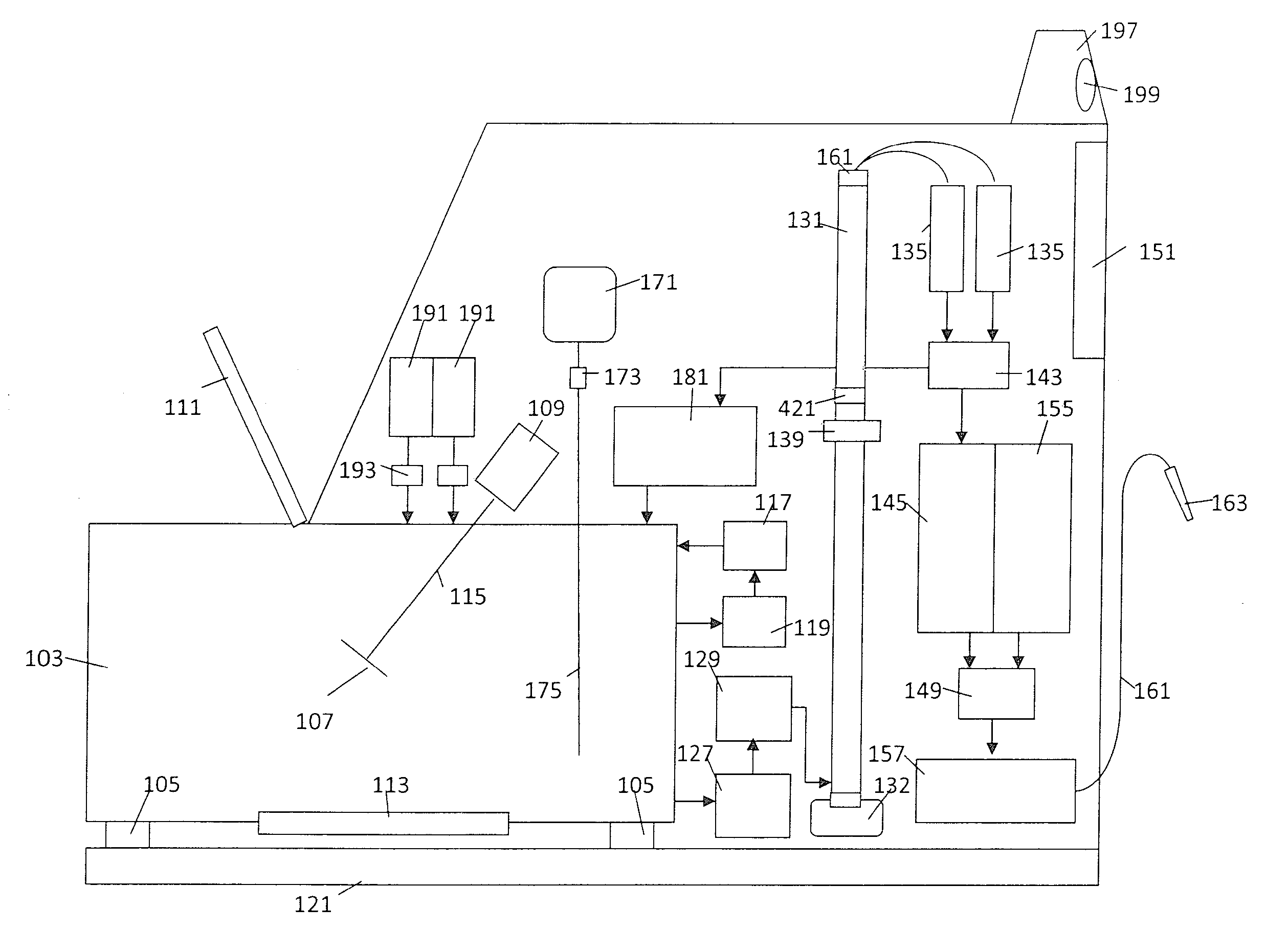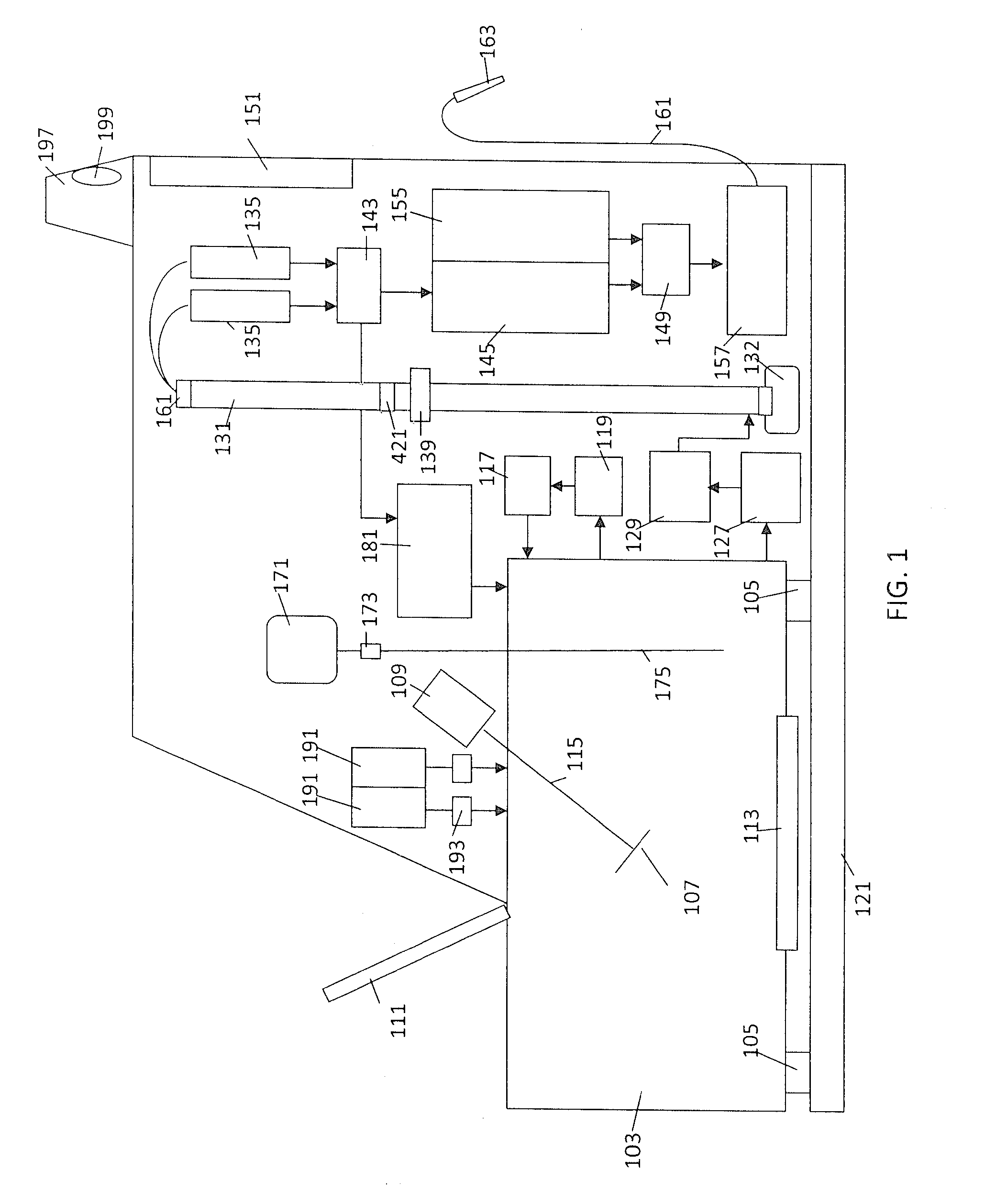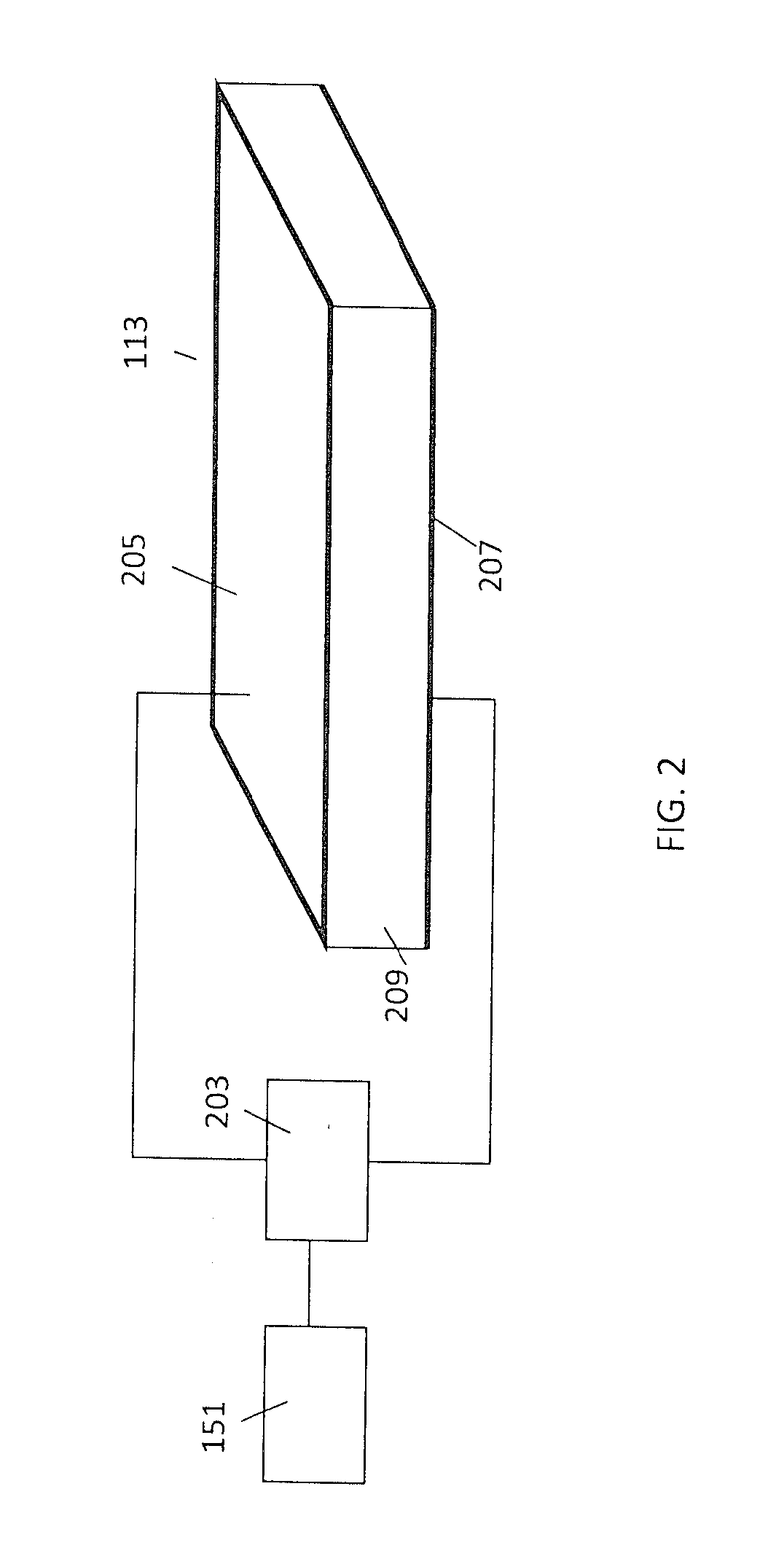Micro refinery for ethanol production
a micro-refinery and ethanol technology, applied in the direction of specific use bioreactors/fermenters, apparatus sterilization, after-treatment of biomass, etc., can solve the problem of large-scale machinery used in production, and achieve the effect of reducing clogging problems, optimum efficiency, and optimizing distillation performan
- Summary
- Abstract
- Description
- Claims
- Application Information
AI Technical Summary
Benefits of technology
Problems solved by technology
Method used
Image
Examples
Embodiment Construction
[0040]The components of the inventive micro refinery system 101 will be described with reference to FIG. 1. In an embodiment the fermentation tank 103 rests on one or more load cells 105 that detect the downward force and produce corresponding electrical output signals. The load cells 105 are coupled to a system controller 151 that monitors the weight of the tank 103 and all contents within the tank 103 throughout the ethanol conversion process. The load cell 105 output signals are proportional to the detected weight. In an embodiment, the system controller 151 can go through a calibration process which detects the weight of the empty tank 103 and stores the empty tank weight as an offset value. The offset value can then be subtracted from any detected weight so that the system controller 151 can detect the weight and quantity of materials that are inserted into the tank 103. The fermentation tank 103 calibration process may be repeated each time a batch of materials is processed.
[0...
PUM
 Login to View More
Login to View More Abstract
Description
Claims
Application Information
 Login to View More
Login to View More - R&D
- Intellectual Property
- Life Sciences
- Materials
- Tech Scout
- Unparalleled Data Quality
- Higher Quality Content
- 60% Fewer Hallucinations
Browse by: Latest US Patents, China's latest patents, Technical Efficacy Thesaurus, Application Domain, Technology Topic, Popular Technical Reports.
© 2025 PatSnap. All rights reserved.Legal|Privacy policy|Modern Slavery Act Transparency Statement|Sitemap|About US| Contact US: help@patsnap.com



